Use VCE Exam Simulator to open VCE files
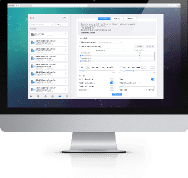
CV0-004 CompTIA Practice Test Questions and Exam Dumps
A software engineer is tasked with transferring data over the internet while also needing the ability to query the data efficiently. The engineer is looking for a method that allows for programmatic access to the data, with the flexibility to request only the specific data needed, rather than receiving large, predefined datasets. Which of the following technologies would be the best choice to help the engineer accomplish this task?
A. SQL
B. WebSockets
C. RPC
D. GraphQL
GraphQL is a modern query language for APIs, and it provides a flexible and efficient way to transfer and query data over the internet. Unlike traditional REST APIs, which return fixed sets of data for a given request, GraphQL allows clients to specify exactly which data they need. This avoids over-fetching or under-fetching of data, which makes it particularly powerful for scenarios where programmatic access and query flexibility are crucial.
With GraphQL, the software engineer can define queries to retrieve specific fields of data, making it more efficient than traditional REST APIs or SQL-based systems in many use cases. It also supports the ability to aggregate data from multiple sources in a single query, which can simplify complex data retrieval scenarios.
Let’s look at why the other options are not as well-suited for this task:
A. SQL: SQL is a language used to manage and query relational databases. While it is excellent for querying data in a database, it is not designed to be used directly over the internet or in programmatic access over HTTP. SQL queries are generally executed within the context of a database engine, not for web-based APIs.
B. WebSockets: WebSockets enable bi-directional communication between the client and server in real-time, typically for scenarios like chat applications, live updates, or gaming. However, WebSockets are not inherently designed for querying data or offering flexible access to structured data over the internet. They are primarily for continuous, real-time data transfer.
C. RPC (Remote Procedure Call): RPC is a protocol that allows one system to execute a function or procedure on another system. While RPC provides programmatic access, it generally requires the client to know the server’s function definitions in advance, which makes it less flexible for querying specific data compared to GraphQL’s dynamic querying capabilities.
GraphQL is the best choice for programmatically accessing and querying data over the internet, offering flexibility in the types of data retrieved and reducing the amount of unnecessary data transfer.
Which field of computer science focuses on enabling computers to analyze and interpret visual information, such as identifying objects and recognizing people in images and videos?
A. Image reconstruction
B. Facial recognition
C. Natural language processing
D. Computer vision
Computer vision is a field of artificial intelligence (AI) and computer science that focuses on enabling computers to process and interpret visual data—such as images and videos—in a way that simulates human vision. It is the technology that allows machines to "see" and understand the content of images and videos, including identifying objects, recognizing faces, detecting motion, and more. This is achieved through algorithms that analyze visual data and extract meaningful insights.
Computer vision techniques involve the use of machine learning and deep learning models to train computers to recognize patterns, shapes, and structures in images. These systems can be trained to identify various objects (e.g., cars, trees, or animals) and even track the movement of people or objects in videos. The applications of computer vision are vast and include areas like:
Object detection and recognition: Identifying and labeling objects in images (e.g., detecting cars or faces).
Facial recognition: A subset of computer vision focused on identifying individuals based on facial features.
Image segmentation: Dividing an image into different segments to make it easier to analyze.
Video analysis: Interpreting video data to track movement, detect events, or analyze behaviors.
Now, let’s look at why the other options are not correct:
A. Image reconstruction: This refers to the process of improving or reconstructing images that have been degraded or distorted, such as enhancing the resolution of an image. While image reconstruction deals with visual data, it doesn’t focus on object or people identification in the way computer vision does.
B. Facial recognition: While facial recognition is a specific application of computer vision, it is just one aspect of the broader field. Facial recognition focuses solely on identifying and verifying individuals based on facial features, whereas computer vision includes many other tasks beyond facial recognition.
C. Natural language processing (NLP): NLP deals with the interaction between computers and human language. It involves tasks such as speech recognition, language translation, and sentiment analysis, but it does not involve visual data like computer vision does.
Computer vision is the field of computer science that enables computers to analyze and understand visual data, making it the best choice for tasks like identifying objects and people in images and videos.
A company wants to deploy its custom code directly in the cloud without having to worry about provisioning or managing additional infrastructure. Which of the following cloud service models would be the most suitable for this type of deployment?
A. Platform as a Service (PaaS)
B. Software as a Service (SaaS)
C. Infrastructure as a Service (IaaS)
D. Everything as a Service (XaaS)
PaaS (Platform as a Service) is a cloud computing service model that provides a ready-to-use platform for developing, running, and managing applications without the need for managing the underlying infrastructure (such as servers, storage, or networking). PaaS allows developers to focus solely on writing and deploying their code while the cloud service provider takes care of the infrastructure, operating systems, databases, and middleware.
In this case, the company needs to deploy its custom code without the burden of provisioning or managing additional infrastructure. PaaS is the best option because it offers a fully managed environment, enabling the company to quickly and efficiently deploy applications. Some popular PaaS providers include Google App Engine, Microsoft Azure App Services, and Heroku.
B. Software as a Service (SaaS): SaaS provides software applications over the internet on a subscription basis. These are typically fully developed applications that end-users can use, such as email (Gmail), customer relationship management (CRM) tools (Salesforce), or collaboration software (Google Docs). While SaaS is useful for using applications, it does not provide the flexibility for a company to deploy and manage its custom code.
C. Infrastructure as a Service (IaaS): IaaS offers basic computing resources, such as virtual machines, storage, and networking, that the company can use to build its own infrastructure. However, this model still requires the company to manage the operating system, middleware, and application stack. In contrast, PaaS abstracts away much of the infrastructure management, making it a better fit for deploying custom code with less effort.
D. Everything as a Service (XaaS): XaaS is a broad term referring to the delivery of any IT service over the internet, including IaaS, PaaS, SaaS, and many other specialized services. It is not a specific service model but rather an umbrella term for various cloud offerings. Therefore, it is not the best fit for the company's specific need.
Platform as a Service (PaaS) is the ideal choice for the company to deploy its custom code in the cloud without having to manage the underlying infrastructure. It provides an environment that abstracts the complexities of infrastructure management, allowing the company to focus on its core application development.
A company recently discovered that unauthorized individuals accessed the data stored in its object storage. To have prevented the data from being usable if accessed by an unauthorized party, which of the following actions should the company have taken?
A. The company should have switched from object storage to file storage.
B. The company should have hashed the data.
C. The company should have changed the file access permissions.
D. The company should have encrypted the data at rest.
Encryption at rest is a critical security measure to protect data stored on disk or in cloud storage from unauthorized access. When data is encrypted at rest, it is stored in an unreadable format unless the correct decryption key is provided. This means that even if unauthorized parties gain access to the storage, they will not be able to read or make sense of the data without the appropriate key.
For a company to protect its sensitive information in object storage (or any form of storage), data encryption at rest ensures that unauthorized access does not result in exposed, usable data. Many cloud providers and storage systems offer built-in encryption features for data at rest, providing a straightforward way to secure data without needing additional infrastructure.
A. The company should have switched from object storage to file storage.
Switching from object storage to file storage does not directly address the security of the data. Both object storage and file storage can be vulnerable to unauthorized access if proper security measures like encryption or access controls are not in place. The type of storage is secondary to implementing effective security protocols.
B. The company should have hashed the data.
Hashing is a process that converts data into a fixed-length string, often used for verifying data integrity. However, hashing is not reversible, meaning the original data cannot be retrieved from the hash. This would not be useful for storing data in a way that it could later be accessed or read. Hashing is used for verifying passwords or integrity, not for preventing unauthorized access to sensitive data.
C. The company should have changed the file access permissions.
Changing access permissions is essential for restricting who can access the data, but it does not make the data itself unusable if accessed by an unauthorized party. If an attacker gains access to the system, they could still read the data unless it is properly encrypted.
Encryption at rest is the best solution to ensure that data remains unreadable and unusable to unauthorized parties, even if they manage to access the storage. This provides an essential layer of security for sensitive data stored in object storage or any other storage type.
A customer relationship management (CRM) application hosted in a public cloud IaaS environment is found to be vulnerable to a remote command execution vulnerability. To prevent the application from being exploited by basic attacks, which of the following security measures should the security engineer implement?
A. Intrusion Prevention System (IPS)
B. Access Control List (ACL)
C. Data Loss Prevention (DLP)
D. Web Application Firewall (WAF)
A Web Application Firewall (WAF) is a specialized security solution designed to monitor and filter HTTP/HTTPS traffic between a web application and the internet. WAFs are specifically designed to protect web applications from common vulnerabilities, such as SQL injection, cross-site scripting (XSS), and remote command execution (RCE) vulnerabilities. In this case, a WAF can act as a barrier between the internet and the CRM application, blocking malicious traffic before it reaches the vulnerable application.
Since remote command execution vulnerabilities allow attackers to execute arbitrary commands on the server, a WAF can inspect and filter incoming requests, preventing potentially harmful requests from being processed by the application. WAFs use a combination of signature-based detection, behavioral analysis, and custom rule sets to block attacks in real-time. Many WAF solutions are capable of identifying and mitigating common exploits of remote command execution vulnerabilities, making them an effective tool for protecting web applications.
A. Intrusion Prevention System (IPS): An IPS is a network security technology that monitors network traffic for signs of malicious activity and can actively block or prevent certain types of attacks. While IPS systems are useful for identifying and blocking network-based attacks, they are not specifically tailored to protect web applications from vulnerabilities like remote command execution, which often occur at the application layer. IPS solutions can help in some situations but are not as effective as WAFs in protecting against application-specific vulnerabilities.
B. Access Control List (ACL): An ACL is a list of rules used to control traffic based on IP addresses or protocols, typically applied to routers or firewalls. While ACLs help control network traffic and prevent unauthorized access, they do not provide the fine-grained, application-level security necessary to protect against vulnerabilities like remote command execution in web applications.
C. Data Loss Prevention (DLP): DLP is designed to monitor and protect sensitive data from being lost, stolen, or improperly accessed. While DLP can help secure sensitive information, it does not specifically protect against remote code execution vulnerabilities in web applications. DLP tools are focused on data protection, not on preventing exploitation of application vulnerabilities.
A Web Application Firewall (WAF) is the most appropriate solution to prevent basic attacks that exploit vulnerabilities like remote command execution in web applications. It is specifically designed to protect against attacks targeting the application layer, making it the best option in this scenario.
What is a key difference between a Storage Area Network (SAN) and a Network Attached Storage (NAS) system?
A. A SAN works only with fiber-based networks.
B. A SAN works with any Ethernet-based network.
C. A NAS uses a faster protocol than a SAN.
D. A NAS uses a slower protocol than a SAN.
Storage Area Networks (SANs) and Network Attached Storage (NAS) are both methods of providing shared storage solutions, but they operate in fundamentally different ways and are optimized for different use cases.
SAN (Storage Area Network): A SAN is a high-speed, dedicated network that provides block-level access to storage devices. It typically uses fiber channel or iSCSI over Ethernet, allowing storage devices to be connected directly to servers. Since SAN operates at the block level, it is commonly used for high-performance applications that require fast, low-latency data access. It is typically used in environments where speed and performance are critical, such as databases, virtual machines, and high-performance computing systems. SANs are often more complex and expensive to set up and maintain but offer superior performance.
NAS (Network Attached Storage): A NAS system, on the other hand, provides file-level access to storage over a standard Ethernet network. NAS operates as a file server where the data is stored and managed at the file level. It is optimized for simpler, more centralized file sharing and collaboration within a network. NAS devices typically use file-sharing protocols like NFS (Network File System) or SMB/CIFS (Server Message Block/Common Internet File System). While NAS systems are easier to set up and are more cost-effective than SANs, they generally offer slower performance since file-based protocols are inherently slower than block-level access.
A. A SAN works only with fiber-based networks.
This is not correct. While Fiber Channel is a common protocol used by SANs, iSCSI is an Ethernet-based protocol that can also be used in SANs. Therefore, SANs can work with both fiber-based and Ethernet-based networks.
B. A SAN works with any Ethernet-based network.
This is not entirely accurate. While iSCSI (a protocol used in some SANs) can run over Ethernet, Fiber Channel SANs require dedicated fiber optic networks and cannot run on standard Ethernet.
C. A NAS uses a faster protocol than a SAN.
This is incorrect. As mentioned earlier, SAN systems use block-level access (typically via Fiber Channel or iSCSI) and are faster, while NAS systems use file-level protocols, which are generally slower than block-level protocols.
The fundamental difference between SAN and NAS lies in the way they provide storage access. SAN systems use block-level protocols, providing faster and more performance-intensive storage solutions, while NAS systems use file-level protocols, which are slower but easier to set up and manage for general file storage and sharing. Therefore, NAS uses a slower protocol than SAN.
A cloud engineer is troubleshooting an application that interacts with multiple third-party REST APIs. The application occasionally experiences high latency, and the engineer needs to identify the root cause. Which of the following approaches would best help pinpoint the source of this latency?
A. Configuring centralized logging to analyze HTTP requests
B. Running a flow log on the network to analyze the packets
C. Configuring an API gateway to track all incoming requests
D. Enabling tracing to detect HTTP response times and codes
When troubleshooting latency issues in applications that consume multiple third-party REST APIs, the best approach is to implement tracing. Tracing allows you to track and log the entire flow of requests and responses between services, providing visibility into each stage of the transaction, including HTTP response times, request times, and error codes. By enabling tracing, the cloud engineer can isolate specific API calls or stages that introduce delays and identify whether the latency is coming from the application, the network, or the third-party APIs themselves.
Many cloud services, such as AWS X-Ray, Google Cloud Trace, and Azure Monitor, offer distributed tracing capabilities that automatically track HTTP request/response flows, and they also provide detailed metrics, such as response time, status codes, and time spent in each service (including third-party APIs). Tracing also helps identify any failures or slow responses returned by external services.
A. Configuring centralized logging to analyze HTTP requests: Centralized logging is essential for troubleshooting, but it generally focuses on capturing logs (e.g., access logs, error logs) rather than providing real-time performance metrics like response times or latency. While it helps with identifying failures, it is less effective for pinpointing specific latency issues in the flow of HTTP requests and responses.
B. Running a flow log on the network to analyze the packets: While flow logs can provide insights into network-level data such as packet flow and routing, they do not offer the detailed application-level information required to track the exact latency or source of delays within HTTP API calls. Network-level analysis is useful for detecting issues like packet loss or congestion but may not help with high-latency API calls.
C. Configuring an API gateway to track all incoming requests: API gateways can help by providing basic insights into the number of incoming requests and their respective status codes. However, without additional tracing, they may not offer detailed performance insights (e.g., latency per request or response time). API gateways are better suited for monitoring API usage and securing access rather than in-depth latency analysis.
Tracing is the best solution for identifying the source of latency in an application interacting with multiple third-party REST APIs. It allows the cloud engineer to monitor HTTP response times, identify delays in external API calls, and quickly diagnose where the bottlenecks are occurring.
A team of cloud administrators often uses the same deployment template to recreate a cloud-based development environment. However, they are unable to review the history of changes that have been made to the template. To address this issue, which of the following cloud resource deployment practices should the administrators start using?
A. Drift detection
B. Repeatability
C. Documentation
D. Versioning
In cloud-based deployments, versioning refers to the practice of assigning unique identifiers to different versions of deployment templates or configuration files. This practice allows administrators to track the changes made to templates over time and ensures that they can review or revert to previous versions if necessary. By using versioning, the administrators can maintain a history of modifications, making it easier to audit, troubleshoot, and manage changes in the deployment process.
In environments where cloud templates are frequently modified, versioning provides an organized way to manage updates. With version control, cloud administrators can:
Track changes: Easily view what was changed between versions.
Revert to earlier versions: If a change introduces an issue or instability, administrators can roll back to a known stable version.
Collaborate efficiently: When multiple administrators are involved, versioning ensures that changes are properly tracked and conflicts are minimized.
Popular version control systems, like Git, are often used to manage deployment templates in cloud environments. Cloud providers, such as AWS and Azure, also offer built-in versioning options for infrastructure-as-code (IaC) templates like CloudFormation or ARM templates.
A. Drift detection: Drift detection refers to the process of identifying changes made outside of the prescribed configuration (such as manual changes) that may cause discrepancies between the current state and the desired state of the infrastructure. While drift detection is useful for ensuring that the environment matches the intended configuration, it does not help track the history of changes to the deployment templates themselves.
B. Repeatability: Repeatability ensures that a deployment template can be used multiple times to recreate the same environment. While repeatability is an important principle, it doesn't address the need to review and manage the history of changes made to the template.
C. Documentation: Documentation is important for understanding how templates and deployments are structured, but it does not offer the same level of traceability or version management as versioning. Documentation alone is not sufficient for tracking changes over time.
Versioning is the most appropriate method for cloud administrators to track and manage changes to their deployment templates. It ensures that changes are documented and auditable, allowing administrators to review the history of modifications and revert to previous versions when necessary.
A government agency in the public sector is planning to migrate its services from on-premises infrastructure to the cloud. Which of the following factors should be prioritized during this cloud migration? (Choose two.)
A. Compliance
B. IaaS vs. SaaS
C. Firewall capabilities
D. Regulatory
E. Implementation timeline
F. Service availability
When a government agency in the public sector considers migrating from on-premises infrastructure to the cloud, two of the most critical factors to prioritize are compliance and regulatory requirements. These considerations play a crucial role in ensuring that the migration meets legal, security, and operational standards that are necessary for public-sector organizations.
Compliance refers to the adherence to industry standards, policies, and legal requirements that govern the handling and storage of data. In the public sector, government agencies often have to comply with strict regulations regarding data privacy, security, and management. When migrating to the cloud, it is vital to ensure that the cloud service provider can meet these compliance requirements. Examples include regulations like GDPR (General Data Protection Regulation) for European Union citizens’ data or HIPAA (Health Insurance Portability and Accountability Act) in the healthcare sector. Agencies must ensure that the cloud provider offers solutions that are compatible with these requirements, which may involve certifications such as ISO 27001, SOC 2, or FedRAMP for federal government agencies in the U.S.
Alongside compliance, regulatory requirements are just as critical. These regulations are often government-imposed rules that define how data is processed, stored, and transferred, as well as security and operational controls required to protect sensitive information. In the public sector, there are typically more stringent guidelines for data management and security. For example, government data might need to stay within specific geographical boundaries (e.g., data sovereignty laws) or may be subject to special security measures. Regulatory concerns are particularly important in the cloud migration process, as different countries and industries may have differing legal frameworks.
B. IaaS vs. SaaS: While selecting between IaaS (Infrastructure as a Service) and SaaS (Software as a Service) is important for determining the cloud architecture, it is secondary to compliance and regulatory considerations for public-sector agencies. The choice between these models depends more on the agency's operational needs rather than legal or security concerns.
C. Firewall capabilities: Firewall capabilities are always important for security but do not address the higher-level concerns of regulatory and compliance requirements. Firewall configurations are just one element of the broader security framework that needs to comply with regulations.
E. Implementation timeline: The implementation timeline is relevant for project management but does not have the same direct impact on the legal and regulatory aspects of the migration as compliance and regulatory requirements do.
F. Service availability: Service availability is always a consideration in any cloud migration. However, while availability is important for operational efficiency, it is not as paramount as ensuring compliance and meeting regulatory requirements, especially in the public sector where data security and legal requirements often take precedence.
For a government agency in the public sector, compliance and regulatory requirements are the most important factors when migrating to the cloud. These factors ensure that the migration aligns with legal standards and provides the necessary security for sensitive governmental data. Only after ensuring these elements are in place should agencies focus on other technical or operational concerns such as service models or firewall configurations.
Related Exams

Top Training Courses
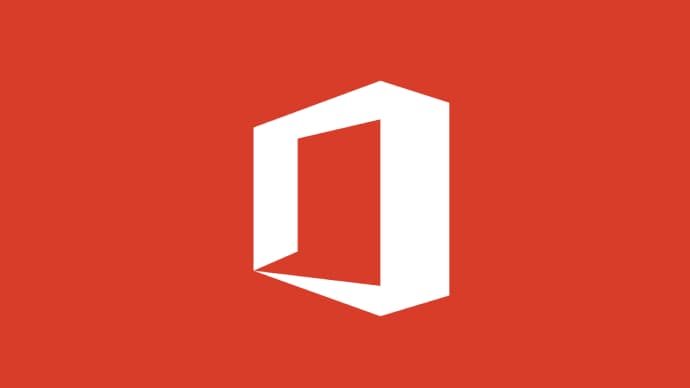



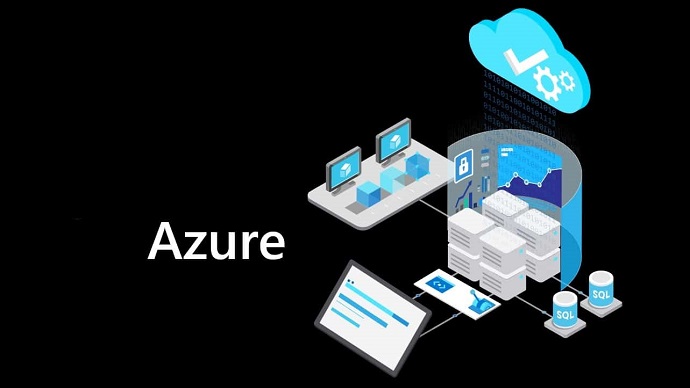

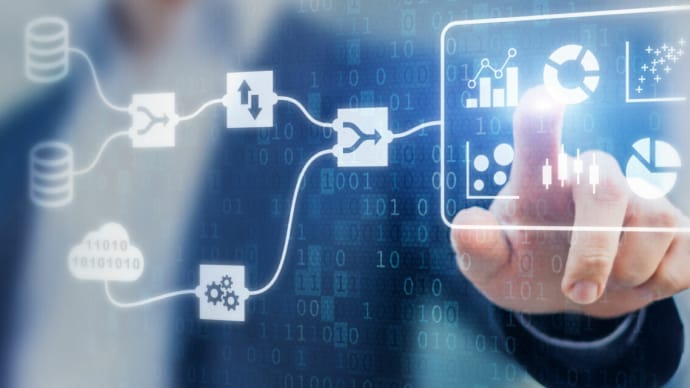

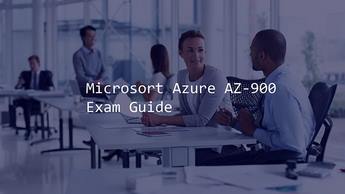


SPECIAL OFFER: GET 10% OFF
This is ONE TIME OFFER

A confirmation link will be sent to this email address to verify your login. *We value your privacy. We will not rent or sell your email address.
Download Free Demo of VCE Exam Simulator
Experience Avanset VCE Exam Simulator for yourself.
Simply submit your e-mail address below to get started with our interactive software demo of your free trial.